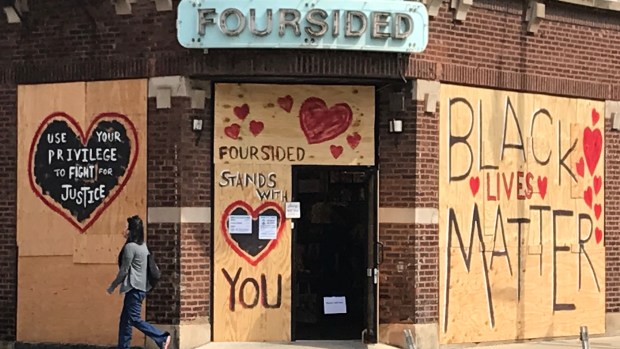
In a previous article I asked what legacy you will leave in the face of climate change. Today I ask what legacy you will leave in response to state violence against Black people and racist systems that disrupt and end the lives of Black and Brown people.
I recently had a Twitter exchange with someone who felt that concerns around equity and conversations around the very real factors that lead African-American and Latinx folks to feel unsafe on the streets are a delaying tactic for creating more protected bike lanes in the city. In many ways this line of thinking speaks to the heart of criticism of “white urbanism” by groups like The Untokening. When planning decisions around sustainable transportation and public space projects like pedestrian plazas, car-free streets, and protected bike lanes are made without regard to how people from a variety of backgrounds (race, gender identity, gender expression, sexual orientation, ability, age, etc.) use space and relate to the built environment, harm occurs.
As sustainable transportation advocates pushing for better walking, biking, transit, and public space, we must always be mindful of the many societal issues that are barriers to Black and Latino residents fully benefitting from these improvements. These include housing displacement, low wages, healthcare disparities, overpolicing (which in turn diverts funding from social programs), and many other factors. We cannot discuss ways to make our cities more “liveable” without also talking about all the ways that oppressive systems dictate who can even show up in the streets without fear of violence or death in public spaces.
The mainstream vision of “urbanism” has mostly been defined by white people. When planning or advocating for transportation, traffic safety, or public space improvements, we must listen to the voices of all local residents, or at least a sampling of community members who reflect the demographics of the affected area.
For the most part, white people dictate what public spaces should look like. Due to the history of structural racism in our country, white folks are more likely to have privileges — such as spare time, discretionary income, higher education, and political connections — that enable them them to show up for public meetings and provide input through other means to dominate conversations on what projects are approved or rejected.
That is why I was so taken by the approach that Oakland planner Warren Logan outlined in an August 2019 CityLab interview: planning with communities as opposed to planning for communities, and seeing local residents as the real experts on their neighborhoods. (Read more on this subject in Streetsblog Chicago’s interview with Logan.)
If Chicago’s City Council and Mayor Lori Lightfoot are truly concerned about the rioting and looting that has taken place in connection with protests against the police murder of George Floyd, they need to really examine the root causes of these activities. Riots and looting happen when people feel they have no other recourse.
And a type of violence that has a more profound impact on Chicago residents is the way our city prioritizes corporations, business interests, and police over everyday people and their needs. Investments have flowed to majority-white North Side neighborhoods for years as the South and West sides saw far less investment to increase economic opportunities and quality of life.
Black and Latinx Chicagoans know best what their communities need. One demand that has been articulated by Black Lives Matter Chicago is the need to defund the Chicago Police Department, which currently receives about $1.8 billion, or 40 percent of the total 2020 city budget, and reinvest that money into services that address the harms these communities have suffered.
When you do a lengthy thread replete w/ stories on how/where gang issues fit into the safe/open/slow streets discussion and someone immediately tells you there's no need to read it because the real problem is cars, did you really happenhttps://t.co/9GGZ5XE63u
— sahra (@sahrasulaiman) May 25, 2020
Chicago urban planner and Streetsblog contributor Michael Podgers, discussed the need for the need for planners to help make racial justice a reality in a blog post this week titled, “Justice in Planning? Start by Defunding the Police.” The piece begins with a recognition that planners have historically ignored larger social issues faced by BIPOC and focused solely on changing the built environment. Podgers writes, “Spatial change can lead to positive social outcomes, but it does not mean social change is the same as justice. We talk a lot of fancy talk about what our cities can look like, but we need to begin by acknowledging where we really are and using our privilege to demand cities that are just and base our demands on those of Black and Brown advocates. It also means we must now go after one of the institutions that has historically helped secure our privilege: the police.”
It’s a powerful call that I hope many within the planning field and beyond will heed. Numerous lives are impacted by the decisions we make today. I hope that you make choices today that you will be proud to stand by later in the quest for a more just society.I hope that you make choices today that you will be proud to stand by later in the quest for a more just society.






